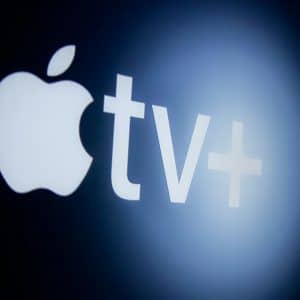The Beatles may need no introduction now, but 50 years ago they were million-selling moptop mysteries, largely unseen in this country but already suitors to swoony teenage girls to whom they declared, “I Want to Hold Your Hand.”
They had been a sensation in England for more than a year, but in that pre-Internet era it took more time for the Beatles to be discovered on “The Ed Sullivan Show” than it took Queen Isabella to hear that Christopher Columbus had discovered the New World.
That appearance, on Feb. 9, 1964, attracted a record U.S. television audience of 73 million viewers — roughly 40 percent of all Americans. Even without the lubricating effects of YouTube and Twitter, the Beatles’ Sullivan shows on back-to-back Sundays remain the most-viewed regularly scheduled TV programs of all time as a percentage of the country’s population.
The Beatles abruptly put an end to rock’s clamorous early years, marked by novelties such as the Singing Nun’s “Dominique,” which topped the charts at the end of 1963, and hip-shaking solo acts such as Elvis Presley and Jerry Lee Lewis. The lads from Liverpool were a band — enlivening American roots music with soaring harmonies — and from the moment they made their first joyful noise on a U.S. stage, everything changed.
A lot more has changed in the half-century since the Beatles sprang from that dazzling debut, fully formed, like Athena leaping from the head of Zeus. The World Wide Web, which didn’t even exist in John Lennon’s lifetime, has completely reshaped the music industry the Beatles so thoroughly dominated.
“It’s hard to imagine how the Beatles could happen now,” says Glenn Gass, who teaches a class on the group to 400 students — with a waiting list to get in — at the highly regarded Jacobs School of Music at Indiana University. “It’s such a different landscape. I think it’s impossible to unite an audience anymore, partly because of technology, partly because it’s become nothing but niche markets.”
The biggest change undoubtedly occurred when iTunes was created in 2003 by Apple — a company Steve Jobs named for the record label started by the Beatles. When iTunes sold its 25 billionth song a year ago, it was emblematic of how completely its new business model emphasizing single songs has demolished the album — a format the Beatles perfected with “Sgt. Pepper’s Lonely Hearts Club Band.”
Of the 30 top-selling albums of all time, all but one — the Beatles’ compilation of No. 1 singles, “1” — were released before 2000, as the Internet entered its ascendancy.
If the Internet has democratized popular music — rendering its troubadours borderless, its reach limitless — it also has made the emergence of a cultural force as dominant as the Beatles unlikely. Last year’s top single in the world, Robin Thicke’s “Blurred Lines,” had sales of 1.47 million. By contrast, “I Want to Hold Your Hand” sold 3.4 million records just in the U.S. — in its first three months of release.
At the same time, musical acts that might have waited years to be signed by a major label during the Beatles’ heyday now are able to essentially invent themselves digitally.
New Zealand’s budding superstar Lorde initially posted her hit “Royals” as part of a free download of an EP titled “The Love Club” on SoundCloud. Social networking guru Sean Parker put “Royals” on his Spotify playlist, Hipster International, and the EP was downloaded 60,000 times before her new record company stepped in and halted the giveaway.
Unknown Irish singer Hozier posted a video of his song “Take Me to Church” on Sept. 25 on YouTube. The next morning it had 9,000 views, then 40,000; when British actor Stephen Fry retweeted a link to his 6.5 million Twitter followers, Hozier was a hit. The video now has more than 1.6 million views, and the singer has a recording contract.
By contrast, the Beatles’ debut was a moment when the world seemed to shift on its axis, a pivot toward joy that would never be equaled, or repeated.
“Like so many people, Feb. 9, 1964 is when my life sort of rebooted,” says Gass, who was 7 at the time and had to watch the revolution with his parents. “We all shared that one experience at the same moment. It’s really hard for my students to even grasp that everyone watched live TV with no YouTube, no DVR, no Facebook, nothing.”
Although it was often difficult to hear the music over their delirious fans’ screaming, the Beatles’ radical chord structures, and the peerless song writing of Lennon and Paul McCartney, eventually would make them the subject of graduate music theory courses. But the threat they posed to the old order was so easy to recognize in that first appearance, establishment institutions quickly lined up against them.
“Visually, they are a nightmare: tight, dandified, Edwardian/Beatnik suits and great pudding bowls of hair,” a Newsweek review sneered the following week. “Their lyrics (punctuated by nutty shouts of ‘yeah, yeah, yeah!’) are a catastrophe, a preposterous farrago of Valentine-card romantic sentiments.”
That was not the impression formed by Mikal Gilmore, who was celebrating his 13th birthday in rural Utah when the Beatles materialized before his eyes 50 years ago. Gilmore wrote Rolling Stone’s January cover story on the group’s conquest of America; in 2009, he also deconstructed the band’s breakup about 40 years after it happened. But long before he became a rock ‘n’ roll journalist, he sensed something magical was happening that Sunday night.
“It’s almost hard to fathom how much they did musically in such a short time,” Gilmore says in a phone interview, “from the very direct rhythms and structures of their early songs to the adventurous and mind-blowing stuff that they did with ‘Strawberry Fields Forever’ and ‘A Day in the Life.’ All of us were pretty aware these were big leaps, big changes.”
Change now comes incrementally, if at all, because that’s the way the music industry wants it, Gilmore says. “There was this kind of limitless ability that the Beatles, and some other artists, had to change quickly and to produce their own inventions as fast as they were making them. The Beatles sometimes put out two or three albums a year. Something like that is not welcomed, or even tolerated, in the music industry now. Artists are expected to keep to a much narrower sensibility.”
Feeling constrained by their record labels, many performers have used the new tools at their disposal to become more entrepreneurial, publishing their own music on iTunes or the Web, then marketing it — and themselves — through social media. For top acts such as U2, Bruce Springsteen and the E Street Band, and those adorable elder-rockers, the Rolling Stones, touring and merchandise have propped up profits in the wake of an Internet-induced collapse of record sales.
When the Beatles arrived Feb. 7, 1964 at JFK International Airport, newly renamed for the slain president the country had been mourning for 75 days, they had a backlog of hit singles in the U.K. stacked up like planes circling for a landing. The band would end 1964 with a sweep of the top two spots on Billboard’s Hot 100: No. 1, “I Want to Hold Your Hand,” No. 2, “She Loves You,” and seven other singles on the list.
The buying power of that young cohort of Beatles fans, later identified as the coveted 12-to-34 demographic, gave rise to a previously undiscovered youth market. The recording industry, Hollywood and seemingly every advertiser who isn’t pushing a denture adhesive has remained enslaved to it ever since.
“I’ve always thought that the baby boom began that night,” Gass says. “The first thing that we all agreed on, the first thing that made ‘We’ with a capital W make sense was the Beatles. It was like, ‘OK, we all have this in common. We all love the Beatles.'”
And in the end / The love you take / Is equal to the love you make.
San Jose Mercury News (CA)






